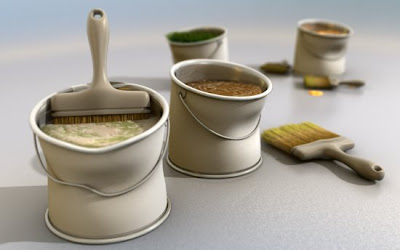I just found this great program that I'd like to share with all of you. Blender combines 3D modeling, rendering, animation, video sequencing, and game development in one application. It is also available on every major platform, meaning Mac, Windows, and Linux users can all work and play together with exactly the same tools.
Blender combines 3D modeling, rendering, animation, video sequencing, and game development in one application. It is also available on every major platform, meaning Mac, Windows, and Linux users can all work and play together with exactly the same tools.
Blender may be open-source, but it is incredibly rich with features. As with professional commercial products like Final Cut Pro, Photoshop, and Dreamweaver, there is a learning curve with such powerful software. A new user should not expect to be creating his first feature-length animation without spending significant time developing skills. Fortunately for everyone, Blender has an active user community that creates tutorials and helps everyone with answers and troubleshooting. The main Blender window can be divided into smaller frames of any configuration the user desires. Each frame can then be used for:
The main Blender window can be divided into smaller frames of any configuration the user desires. Each frame can then be used for:
- 3D View (to view, edit, pose, and animate the model)
- File and Image Browsing
- Buttons (palettes with textures, object, and rendering options)
- OOPS Schematic (interesting, but haven’t found much use)
- User Preferences
- Text Editor (programming)
- Audio Timeline
- Video Sequencer
- UV/Image Editor (vertex color and texture)
- NLA (non-linear action) Editor
- Action (linear) Editor
- IPO (non-linear keyframe sequences) Curve Editor
 Blender’s built-in renderer uses scan-line rendering and generally produces excellent to acceptable results. Anti-aliasing is available in various levels, as well as automatic gamma adjustments. Images and animations can be rendered in any size with presets for NTSC, PAL, and even interlaced formats. The layers features used for modeling carry over to rendering, so layers can be used as needed or rendered separately for compositioning in Blender’s sequencer or other software.
Blender’s built-in renderer uses scan-line rendering and generally produces excellent to acceptable results. Anti-aliasing is available in various levels, as well as automatic gamma adjustments. Images and animations can be rendered in any size with presets for NTSC, PAL, and even interlaced formats. The layers features used for modeling carry over to rendering, so layers can be used as needed or rendered separately for compositioning in Blender’s sequencer or other software.Its powerful features, improved interface, strong continued development, and helpful and open user community make Blender an amazing tool for illustration, design, effects, and animation. And best of all, it’s free.

 DOWNLOAD
DOWNLOADfor more cool programs, click here.
